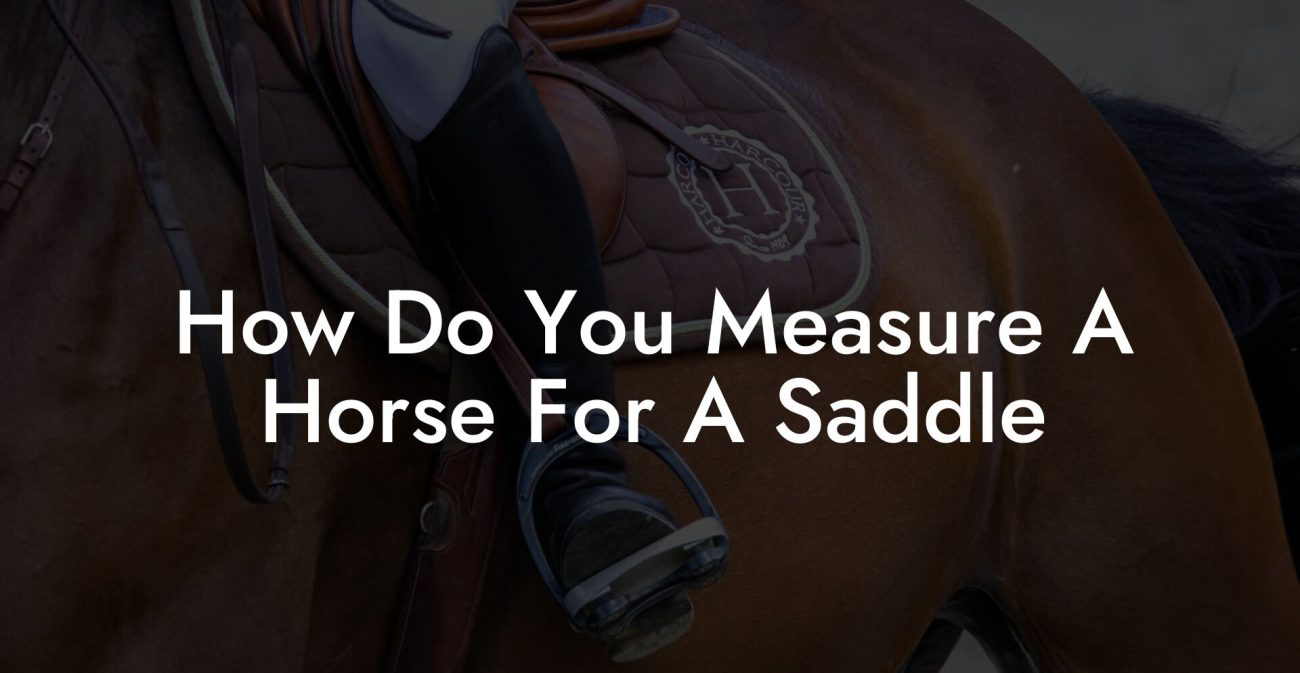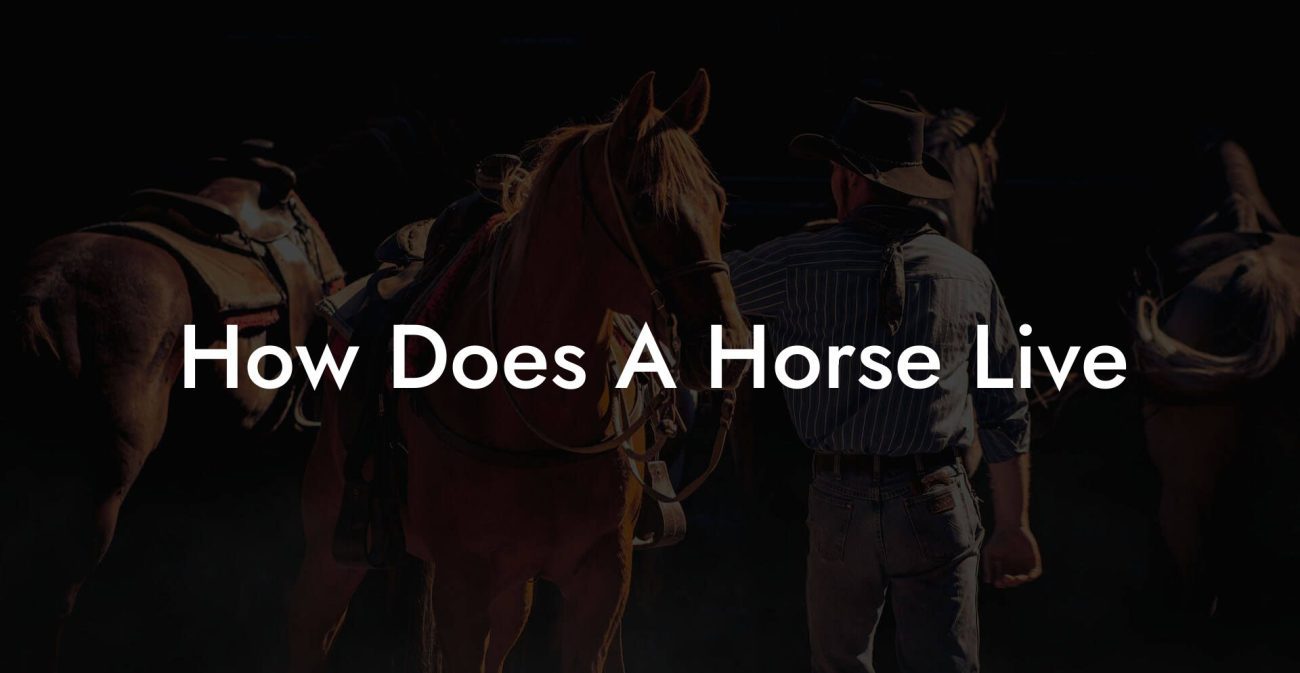Betting odds in horse racing might look like a secret code from a futuristic video game, but once you crack it, you'll feel like you’ve unlocked the ultimate cheat code for both the track and your favorite stable. Whether you’re a seasoned punter or a curious newbie who, by day, lovingly cares for your majestic equine companion, this guide is your treasure map to understanding every twist and turn of the betting odds landscape. Get ready to decode fractions, decimals, and even those baffling American Moneylines with an edge of humor and a dash of savvy insight, perfect for Gen-Z and millennial enthusiasts who live life fast and bet even faster.
Quick Links to Useful Sections
- Understanding the Betting Odds Basics: What Are They Really Saying?
- Diving Into Fractions: Fractional Odds Explained
- Decimal Odds: The Modern Approach to Winning Ratios
- American Moneyline Odds: The Underdog and Favorite Formula
- Horse Racing 101: Beyond the Odds
- Betting Strategies: Turning Knowledge into Profit
- The Racing Form: Your Guide to an Equine Story
- Mind the Gap: The Intersection of Horse Care and Racing Performance
- Digital Tools and Apps: The Tech Edge in Reading Horse Racing Odds
- Advanced Metrics and Analytics: Betting Like a Data-Driven Pro
- Avoiding Common Pitfalls: Mistakes Even the Best of Us Make
- Resources and Community Support: Your Next Steps
- Expert Tips for Reading Betting Odds: A Quick-Start Guide
- Frequently Asked Questions About Horse Racing Betting Odds
- Your Winning Journey: Embracing the World of Horse Racing Betting
Understanding the Betting Odds Basics: What Are They Really Saying?
At its core, betting odds are the language of betting, a symbolic representation of a horse’s chances to win, place, or show its stuff on the track. For the uninitiated, odds serve as both a promise of potential profit and a snapshot of the public’s expectations on a race. More than numbers, they encapsulate everything from a horse’s current form to its pedigree and even subtle clues from the stables.
Think of odds as a fusion between a weather forecast and a performance review. They predict how likely it is that a horse will succeed and, in doing so, provide a basis for how much you might win if you place a bet. And as any savvy horse lover will tell you, understanding those numbers not only sharpens your betting strategy but also deepens your appreciation for the art, and science, of horses in motion.
In the grand parlance of horse racing, odds can come in different forms, each with its own quirks and benefits. Today, we’re diving into the three main types: fractional, decimal, and American Moneyline odds, breaking down their complexities into bite-sized, relatable pieces.
Diving Into Fractions: Fractional Odds Explained
Fractional odds are the traditional standard in the UK and are steeped in rich racing history. If you’ve ever seen a price displayed as 5/1 or 7/2, you’re looking at fractional odds. The first number (numerator) tells you how much profit you could make on a bet, while the second number (denominator) shows the stake required to earn that profit.
For example, if a horse is labeled 5/1, a successful $1 bet nets you $5 in profit, plus your original $1 returned. Conversely, odds of 1/5 indicate that you need to bet $5 in order to earn a profit of $1. It’s like turning your bet into a mini investment where the returns, and risks, are clearly outlined.
For our modern, millennial readers, think of fractional odds as your “ROI calculator,” but with more drama. These odds not only showcase the potential windfall but also subtly hint at the horse’s performance likelihood as judged by the savvy betting community.
So next time you’re at the track or checking out online bookmakers, remember that fractional odds provide an intuitive way to weigh risk and reward, all while paying homage to centuries of racing tradition.
Decimal Odds: The Modern Approach to Winning Ratios
In contrast to their fractional counterparts, decimal odds are the modern metric, ubiquitous in Europe, Canada, and Australia. Presented in a simple decimal format like 6.00 or 1.20, these odds represent the total payout rather than just the profit. That means a bet of $1 at odds of 6.00 returns $6 if successful (your profit is $5, since you get your $1 stake back).
Decimal odds are incredibly straightforward, making them a hit with the digitally native crowd who appreciate clarity and speed. They eliminate the need for piecing together fractions, acting as an all-in-one answer to the question, “How much money’s coming my way if I win?” In a world where every second counts, decimal odds are your streamlined, easy-to-read alternative.
To put it simply, decimal odds let you see at a glance the total payout on offer. A quick mental math check: Multiply your stake by the decimal, subtract your original wager, and voilà, you have your net profit. It’s modern, direct, and built for a generation that loves efficiency.
American Moneyline Odds: The Underdog and Favorite Formula
American Moneyline odds shift the perspective a bit by distinguishing between favorites and underdogs using positive and negative numbers. Negative numbers, such as -150, mean you need to bet that amount to win $100, while positive numbers, like +200, show how much profit you’d earn from a $100 bet.
For example, -200 indicates a strong favorite: you must wager $200 to net $100, implying a higher likelihood of success but lower profit margins. Conversely, an underdog marked at +300 means a $100 wager yields $300 in profit if the horse shocks everyone by crossing the line first.
American odds are all about contrast and clarity. They are particularly appealing for those who like a quick, decisive breakdown of the risk-reward dynamic. While they may initially seem more complex, a little practice, and perhaps a few rounds at the track, will have you reading them like a seasoned pro.
This betting style ultimately reflects the high stakes and adrenaline the sport comes with, perfectly complementing live events that are as unpredictable as they are thrilling.
Horse Racing 101: Beyond the Odds
Now that you’re acquainted with the language of odds, it’s time to explore the broader context of horse racing and how these odds come to be. Horse racing is more than just a sport, it’s a blend of athleticism, strategy, and a dash of unpredictability. From the breakout star who’s been nursed to peak condition to the underdog that defies expectations, every horse has a narrative that influences its odds.
Betting odds are shaped by myriad factors, including a horse’s past performance, pedigree, jockey reputation, track conditions, and even the horse’s health and care regimen. For those who care for horses, you already know that a well-maintained, properly trained horse is a force to be reckoned with on the track.
Consider this: a horse that not only exhibits strong physical condition but is also the beneficiary of dedicated, holistic care may be undervalued in the betting markets. Savvy bettors learn to spot these hidden gems by analyzing form guides, track records, and even whispers from trainers in the paddock.
Whether you’re scouting for trends, counting on insider tips, or simply trusting your gut, bolstered by your background in horse care, the world of horse racing is an intricate tapestry. Every thread, from the health of the steed to the nuances of the odds, has a role in the final race-day picture.
Betting Strategies: Turning Knowledge into Profit
Understanding betting odds isn’t just an academic exercise; it’s a springboard into developing winning strategies. In horse racing, as in life, risk is always part of the deal. The trick is to balance your instinct with data-driven insights.
One popular strategy is value betting. This involves identifying horses whose odds seem inflated relative to their true chances of winning. For instance, if you believe a horse is poised for a win based on its excellent training and matching conditions, but the odds suggest it’s an underdog, you might have stumbled upon a lucrative opportunity.
Another approach is the Dutching system, where you cover multiple horses in a race with a single bet, ensuring that if any one of them wins, you come out ahead. This strategy requires careful calculation and a deep understanding of how odds combine and offer overall value.
Also, keep in mind the importance of bankroll management. Betting should be fun and calculated; never wager more than you can afford to lose. Modern betting tools and mobile apps can help you track your spending and set limits, ensuring that your passion for horse racing remains a positive, enriching experience.
By combining a robust understanding of the odds with practical betting strategies, you not only maximize your chances of winning but also enhance your overall enjoyment of the sport. After all, a well-placed bet is like a well-timed pat on the back for your favorite horse, it’s a celebration of preparation, insight, and a little bit of luck.
The Racing Form: Your Guide to an Equine Story
Think of the racing form as the biography of each horse, chronicling its journey through past races, current training performance, and even its temperament on the track. This crucial tool provides details such as finishing positions, times, track conditions, and jockey performance.
For the modern reader, the racing form is as essential as a smartphone for a social media influencer. It gives you context beyond the numbers. A well-cared-for horse might have slight blemishes on paper but can be a powerhouse in the right conditions. On the other hand, a flashily advertised contender may hide subtle weaknesses that only a deep dive into the racing form could reveal.
When you combine insights from the racing form with the betting odds, you create a multi-dimensional picture. It’s a bit like looking at a living, breathing infographic where performance stats meet emotional narratives. Knowing how to read these subtle cues can give you that extra edge, a nod to both your passion for horses and the thrill of the gamble.
Dive into the past performances, pay attention to any recurring patterns, and consider the impact of track conditions. With practice, the racing form becomes as familiar as your favorite grooming routine, offering insights that can transform a casual wager into a well-informed bet.
Mind the Gap: The Intersection of Horse Care and Racing Performance
For anyone who cares deeply about horses, understanding the nuances of how proper care affects performance is second nature. Just as a well-balanced diet, regular exercise, and attentive grooming can transform a horse’s potential, these same factors subtly influence the betting odds.
Modern horse care isn’t merely about providing food and shelter; it’s a sophisticated blend of veterinary science, nutrition, and emotional wellness. A horse that’s treated with meticulous care is not only healthier but also more likely to perform consistently on the track. When the trainers and caretakers put in the extra effort, the results can be seen in the horse’s vigor, stamina, and focus.
Bettors who understand these nuances can often spot value opportunities where the public might be swayed by reputation or hype rather than actual performance potential. In simple terms, if you know your horse and you know its story of recovery, training innovations, or dietary upgrades, you can translate that insight into more informed betting decisions.
This is where the worlds of betting and horse care harmoniously converge. Your expertise in equine care, whether you’re an owner, trainer, or simply an admirer, gives you a unique perspective that many betting enthusiasts might overlook. Recognizing that top-notch care can create a competitive edge opens up new avenues for spotting under-the-radar horses that are primed for success.
Digital Tools and Apps: The Tech Edge in Reading Horse Racing Odds
Gone are the days when every bet was placed with a fluttered newspaper and whispered tips at the track. Today’s digital revolution has transformed horse racing into a smart, interconnected experience. Mobile apps, real-time data feeds, and advanced analytics platforms are revolutionizing how odds are displayed and interpreted.
For the digitally savvy, these tools offer instant updates on odds across different bookmakers, detailed insights from race analysts, and even artificial intelligence-based predictions that parse through mountains of data. Whether you’re checking odds on your smartphone over your morning latte or scanning live race data during a break, technology keeps you connected to every heartbeat of the racing world.
Key apps and websites provide dynamic dashboards that not only show the current odds but also track changes throughout the day. This allows you to spot market shifts that might indicate insider information or changes in a horse’s condition. Many of these platforms integrate social media feeds, enabling you to tap into community sentiments and chatter from industry experts in real time.
Embracing these digital tools means you’re not just passively reading odds, you’re actively engaging with a community that shares your passion, armed with powerful analytics and a shared love for everything equine. In a fast-paced digital age, being tech-savvy isn’t just cool, it’s essential for staying ahead in the betting game.
Advanced Metrics and Analytics: Betting Like a Data-Driven Pro
For those who love a deep dive into the numbers, advanced metrics provide a treasure trove of insights into horse racing performance. Beyond the simple odds and past race times, contemporary analytics encompass factors such as speed ratings, sectional timings, pace figures, and even biometric data when available.
Data analytics in horse racing have evolved significantly, with statisticians and racing enthusiasts using complex models to predict outcomes. By looking at historical performance trends and the impact of variables such as track surface, weather conditions, and even jockey behavior, you’re able to develop a much more nuanced understanding of each race.
These advanced metrics not only enhance the thrill of placing bets but also empower you to fine-tune your strategies. Imagine combining the raw speed numbers with insights gained from top-tier horse care practices, thereby creating a composite indicator of potential race-day success. This data-driven approach can transform casual betting into a disciplined, strategic practice, turning numbers into narratives that guide your every wager.
For the modern bettor, utilizing these insights is like having a secret playbook, a way to distinguish between fleeting trends and long-term indicators of performance. Whether you’re a statistics geek or just enjoy the thrill of deep analysis, advanced metrics have something to offer, ensuring your bets are as informed as they are bold.
Avoiding Common Pitfalls: Mistakes Even the Best of Us Make
Even the most experienced bettors can fall prey to common pitfalls. In the excitement of a nail-biting race and the lure of a lucrative payout, it’s tempting to ignore the fundamentals. One common mistake is to place bets based on gut feeling alone without doing your homework on the horse’s past performance, track conditions, or even the quality of care it receives.
Another misstep is disregarding the importance of bankroll management. It’s all too easy to get carried away, betting more than you can afford or chasing losses with desperate wagers that can spiral out of control. One effective strategy to avoid this is setting a strict betting limit and sticking to it no matter how tempting the odds might seem.
Many novices also fall into the trap of reading the odds without considering external factors. A horse might be a heavy favorite on paper, but if it’s coming off a long layoff or has recently been dealing with health issues, those odds might not reflect the true picture. Similarly, undervalued favorites are sometimes overlooked by bettors who focus solely on high returns, missing out on safer, potentially profitable bets.
Lastly, emotional betting, whether influenced by loyalty to a favorite horse or the adrenaline of the moment, can cloud judgment. It's crucial to remain disciplined and analytical, assessing every factor from a cool head rather than an impulsive beat.
Learning from these pitfalls not only refines your betting strategy but also ensures that every wager is made with a clear, informed perspective. By blending emotional restraint with analytical insight, you can protect your bankroll and optimize your chances of success.
Resources and Community Support: Your Next Steps
As you journey through the adrenaline-fueled world of horse racing betting, know that you’re not alone. A vibrant community of enthusiasts, expert tipsters, and cutting-edge digital resources stand ready to help you sharpen your skills and enhance your understanding. Online forums, social media groups, and specialized apps offer spaces where you can ask questions, share insights, and learn from experienced bettors and horse care professionals alike.
Many websites provide in-depth guides, statistical breakdowns, and even live odds tracking, all tailored to help you make smarter, more informed bets. Podcasts and YouTube channels dedicated to horse racing analysis and betting strategies offer a wealth of information presented in a fun, engaging manner that resonates with modern audiences.
Additionally, if you’re interested in the holistic side of horse racing, there are communities that explore the intersection of proper horse care and race performance. These platforms emphasize how nutrition, training regimens, and overall animal welfare can influence odds and outcomes. Whether you’re looking for mentorship, technical advice, or just a supportive space to celebrate your wins (and learn from your losses), the world of horse racing is teeming with passionate voices eager to share their expertise.
Your next steps might involve joining a local racing club, attending live races to soak up the atmosphere, or enrolling in online courses about horse racing analytics. Embrace the digital tools at your disposal, use apps that analyze odds in real time and track your betting history. By staying connected with the community and continually honing your skills, you’ll be well on your way to becoming a confident and successful bettor.
Remember, every expert was once a beginner. With curiosity, discipline, and a genuine love for horses, you can build a robust foundation that transforms betting from a fleeting hobby into an empowering pursuit that complements your passion for equine care.
Expert Tips for Reading Betting Odds: A Quick-Start Guide
Before you gallop off into the world of horse racing betting, here are some rapid-fire expert tips to keep in mind:
- Take Your Time: Don’t rush into a bet. Study the odds, check the racing form, and consider both the data and the story behind the horse.
- Mix the Types: Familiarize yourself with fractional, decimal, and American odds. Switching between them can help you spot discrepancies and value bets.
- Use Digital Tools: Leverage apps and websites that offer real-time odds and analytics, these can be game-changers in fast-paced races.
- Stay Disciplined: Set a budget and stick to it. Betting should be as strategic as caring for your horse; impulsiveness rarely leads to success.
- Follow the Form: Analyze past performance and training reports. Horses that are well-cared-for often show a consistency in their performance that might not immediately reflect in the odds.
- Learn the Lingo: Get comfortable with racing jargon. Terms like “hot favorite,” “each-way,” and “longshot” are more than buzzwords, they’re keys to understanding the market.
Incorporate these tips into your betting routine and watch as your confidence grows with every race. The world of horse racing is as dynamic as it is exciting, prepare to keep pace, and let every race be a lesson in both strategy and thrill.
Frequently Asked Questions About Horse Racing Betting Odds
We know you’ve got questions, that’s how you learn and refine your craft. Below, we dive into some of the most frequently asked questions about horse racing betting odds, offering clear and concise explanations.
1. What do fractional odds actually represent?
Fractional odds (for example, 5/1 or 7/2) show the profit you can make relative to your stake. A 5/1 bet means you earn $5 profit for every $1 staked, plus your original wager back if you win.
2. How are decimal odds different from fractional odds?
Decimal odds display the total payout (including your stake) in a single number. For example, odds of 6.00 mean you receive $6 for every $1 bet, so your net profit is $5.
3. Why do American Moneyline odds use positive and negative numbers?
American Moneyline odds differentiate between favorites and underdogs. A negative number (like -150) means you must bet that amount to win $100, indicating a favorite. A positive number (like +200) shows the profit on a $100 wager, typically used for underdogs.
4. How can I spot a value bet in horse racing?
A value bet exists when the odds offered are greater than the true probability of winning. This often involves doing in-depth research, analyzing the racing form, understanding the horse’s condition, and using data-driven insights.
5. What digital tools can help me read odds more effectively?
Numerous mobile apps and websites offer real-time odds updates, advanced analytics, and community discussions. These tools not only provide quick access to data but also help you track trends and refine your strategies.
6. How does proper horse care affect betting odds?
Horses that are well-trained and properly cared for often have more consistent performances. Bettors who take note of subtle indications of superior care, like improved racing form and physical condition, can detect opportunities that might otherwise be overlooked.
7. Can a detailed racing form really improve my betting success?
Absolutely. The racing form details a horse’s recent performance, training, and conditions. When combined with a deep understanding of the odds, it helps create a comprehensive picture that leads to more informed, successful bets.
8. Is it better to bet on favorites or underdogs?
There isn’t a one-size-fits-all answer. Betting on favorites might offer lower returns with higher chances, while underdogs can deliver big wins if you spot hidden value. Balancing both approaches as part of your overall strategy is key.
9. How important is bankroll management in horse racing betting?
It’s critical. Effective bankroll management ensures that you never bet more than you can afford to lose and helps you maintain a steady, calculated approach, especially during high-stakes races.
10. Where can I further improve my understanding of horse racing betting?
Joining online forums, following expert blogs and podcasts, and engaging with a community of fellow horse racing enthusiasts are excellent ways to deepen your knowledge. There’s a wealth of resources and real-time data tools available to help you at every step.
Your Winning Journey: Embracing the World of Horse Racing Betting
Embracing the art of reading horse racing betting odds is an empowering journey, one that blends analytical prowess with a genuine appreciation for the world of horses. Whether you’re a dedicated caregiver who knows that proper feeding, training, and care can transform a horse’s performance, or a spirited bettor eager to capitalize on every statistical nuance, the skills you acquire here are invaluable.
Every race is a story, every bet a narrative woven from data, passion, intuition, and a little bit of luck. Your commitment to understanding the odds not only enriches your experiences at the track but also strengthens your connection to the incredible animals that make horse racing so captivating. With the insights you’ve gained, you are poised to turn every wager into an informed, thrilling opportunity.
So, gear up, stay curious, and never stop learning. The world of horse racing betting is ever-evolving, just like the dynamic spirit of the horses themselves. With every race, every shift in odds, and every decision you make, you’re not just betting, you’re participating in a grand spectacle of speed, strategy, and sheer unpredictability.
Your journey is only beginning. Dive deeper into every form guide, utilize digital tools, consistently refine your strategies, and connect with fellow enthusiasts. Celebrate both the wins and the learning curves, knowing that each step forward builds your expertise and your passion for both horse care and racing. In the pursuit of smart betting, you are truly in a league of your own, where knowledge meets heart, and every wager is a step towards mastering the thrilling art of horse racing.













